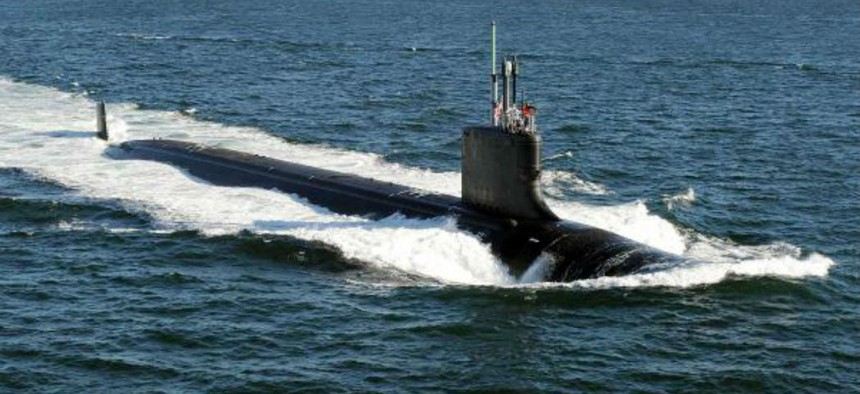Navy Virginia class subs get upgraded Tactical Control Systems
Attack submarines equipped with Tactical Control Systems for weapons control are getting new commercially developed hardware, software and tech for sensors, networks, command and control.
The Navy’s accelerated integration of new commercial hardware and software into its submarine fleet is particularly suited for the technologies woven into the Virginia class of attack submarines.
The submarines are being upgraded with a new Tactical Control System (TCS) to provide weapons control, improved network subsystems, and other critical technologies, a Pentagon announcement said.
The TCS portion of BYG-1 integrates sensor inputs to provide a common operational picture and enhance information assurance for attack and guided missile submarines.
A key reason for integrating COTS into the Virginia class submarines is because the newer submarines rely heavily on computer technology, automation and advanced sensors.
The new technology is designed to exploit the power of sonar, electronic support measures, radar, navigation, periscopes and communication, according to information from the Navy and General Dynamics Mission Systems (GD-MS).
According to the Navy, TCS makes use of advanced equipment through commercial-off-the-shelf (COTS) technology and upgrades it with a practice called Acoustic Rapid COTS Insertion.
“By adapting off-the-shelf technology to upgrading Virginia class, the Navy and its contractors are able to exploit the latest commercial advances while saving money. The commercial sector typically leads the military in fielding cutting-edge electronics, so it makes sense to leverage what's available in the marketplace in support of naval needs,” said Loren Thompson, Chief Operating Officer at Lexington Institute.
The Navy will continue to work with GD over a period of more than eight years to sustain the initiative to integrate COTS technologies into the submarine fleet. The most recent deal included a $36 million modification to the arrangement.
Commercially developed software and information are provided openly and freely to the TCS development community of contractors, laboratories, and universities as well as other DOD organizations and partners.
Throughout each development and integration cycle, which takes place on a biennial schedule, the software and system design information is provided at set increments.
This is designed to allow for frequent evaluation and testing by the end user, GD said.
In today’s increasingly contested undersea domain, attack submarines are increasingly performing ISR missions since they are able to reach areas closer to enemy coastline than some surface ships.
Compared to older Navy attack subs like the Los Angeles class, the Virginia class submarines are engineered to bring vastly improved littoral warfare, surveillance and open ocean capabilities, service officials said.
The Virginia-class submarines are designed with this “Fly-by-Wire” capability which allows the ship to quietly linger in shallow waters without having to surface or have each small move controlled by a human operator. With this technology, a human operator will order depth and speed, allowing software to direct the movement of the planes and rudder to maintain course and depth.
The Block III Virginia class submarines also have a Large Aperture Bow conformal array sonar system that is designed to send out an acoustic ping, analyze the return signal, and provide the location and possible contours of enemy ships, submarines and other threats.
NEXT STORY: Navy turns to unmanned systems to map the ocean




